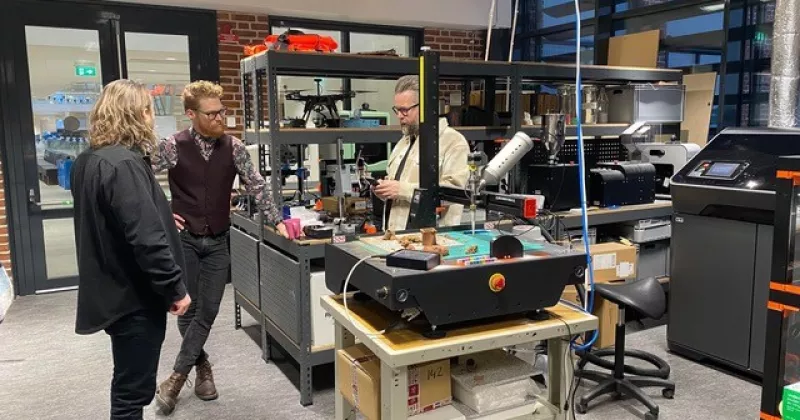Lessons from the Coronas – Interesting Museum Education
Colleagues at museums all over the world have been mainly closed for a number of months now. Besides the problems and challenges with employment and financing that comes from that museums also are estranged when not meeting the public. After all, it is for the people that museums exist.
Together with colleagues at University of Padua and University of Glasgow the European Museum Academy is engaged in monitoring how museums are responding to the Covid-19 situation by using digital means. We have of course only been working on this initiative for two months now, but there are already some interesting observations which may point to interesting museum features in the future.
First of all in principle all museums are now more active than ever on the web and on all kinds of social media. The current pandemic has created a boom in the development of museums use of digital means to reach their public. The boom is significant in its size and it may honestly be claimed that the Covid-19 pandemic has done more for museums digital development than the many programmes and projects in the last two previous decades. Most digital museums initiatives now are basically about making their collections easy available on their websites and that can of course be done in many ways, but what strikes me is the initiatives which takes stock of the demand for interactivity and participatory governance which are as important as ever for the museums to stay relevant for the people at large and not only a limited elite.
An interesting example of the digital outreach initiatives in a classical atmosphere of a museum is the director of Design Museum Denmark in Copenhagen – Anne-Louise Sommer – visiting the museums archive and showing some drawings and water colour paintings by Finn Juhl. The visit was recorded and is now available on YouTube (https://www.youtube.com/watch?v=oRSztH_n-sY) The director talks about a part of the collections and does that very well. The museum has produced a number of similar guided digital tours to specific items in the collections where specialists tells the story and re-creates this context which is so special for the good classical museum experience. It is simply great! I guess other museum freaks like me will love it too. But for the public this is an offer like the offers on the tv-channels where you see what you want to see when you want to see it, but you have no influence on the content, you’re not part of the production and you may be left with questions unanswered.
As a direct opposite digital offer is the 360 degrees museum experience at Rijksmuseum in Amsterdam produced by Q42 https://www.rijksmuseum.nl/en/from-home where the digital visitor can move around in the galleries and have a look through the amazing eyes of a robot camera. Here you can look at paintings at your own pace and spent more time in one gallery than another as you choose. With this solution the visitor is really in charge, and again this may be great for the visitor who is already passionate about what can be experienced. But the visitor is left alone and with no guidance or only the passive guidance in form of texts.
In the good old days before the Covid-19 pandemic when museums had many real visitors of flesh and blood in general the most popular museums attracting a broad public regarding gender, age, cultural, educational, and social background provided interactivity. That was most often interactivity as screens or other digital means in the exhibition could come alive with a press on a button and the visitor could scroll and search or the like. Maybe a question here and there provided a situation for the visitor to be addressed by the exhibition which in turn could provide an inclusive dimension. In other museums real people – maybe even in costumes – met the visitors and living history has been growing as a method in museums throughout the world and not least in the popular open-air museums and archaeological parks. But how can this kind of interactivity be integrated in a digital museum visit?
Mostly we have so far seen a quantitative explosion in museums use of digital outreach, but during the Covid-19 pandemic there have been developed a few interesting ways to include the public. An interesting example is the Museum of Childhood Ireland initiative where they invite children to produce and deliver illustrations based on a theme which changes every week and then presented in a digital exhibition on the website of the museum http://museumofchildhood.ie/project2020/. This way the visitors are also co-producers of the exhibition and I guess the children are as proud as their parents and inviting the public to contribute needs not to be restricted to children.
Another interesting example moves further towards bringing the best of an analogue museum experience on to the digital means. At Randers Regnshov (Randers Rain Forest) in Denmark they have offered biology lessons through Facebook https://www.youtube.com/watch?v=w9SQmccKxd0 to all school classes and it has been a great success where school classes from the whole country has been participating. The lesson is the best days combined with use of for example text messages which during the lesson is send by the pupils or their teacher to the museum lecturer who can then answer In real time and the same way the museum lecturer can ask for reactions in real time. This gives the museum visit the features which are otherwise missed: It is real live, it is interactive and it provides the opportunity of the museum making direct contact to the individual. This is clearly a breakthrough in the use of digital means and it will be interesting to see how this can be further developed and the method as such finding grounds elsewhere. Neither would this way of providing educational offers have to be exclusive for formal education or one target group. There’s no reason why a group visit with informal learning to adults cannot be executed the same way or the museum offering non-formal lessons for integrational purposes to immigrants or providing interesting experiences.
The Covid-19 pandemic has brought many unfortunate experiences but maybe – just maybe – there might also be a few positive lessons from this 2020. Distance learning can be developed further, and it is interesting that museums slowly but surely are making new interesting efforts.






Museums of today.
It is also a great opportunity for museums to promote themselves. After checking different virtual tours myself, I can admit that I am even more curious to attend several museums in real life when it will be safe.